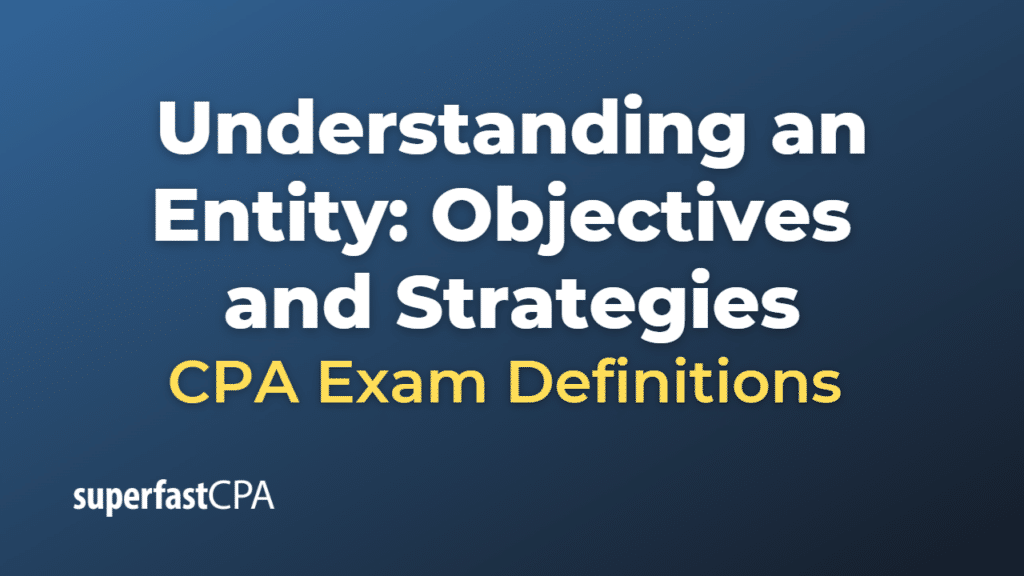Understanding an Entity: Objectives and Strategies
An entity’s objectives and strategies define the nature of the entity by outlining its mission, vision, and overall direction for achieving growth, profitability, and sustainable value creation. Objectives typically set the specific targets that the entity aims to achieve, while strategies detail the means and plans for achieving those targets. The objectives and strategies can impact the risk of material misstatement in an entity’s financial statements in several ways:
- Management incentives and bias: The objectives and strategies can create incentives for management to meet or exceed specific financial targets, potentially leading to management bias, aggressive accounting practices, or even financial statement manipulation to achieve desired results. This can increase the risk of material misstatement in the financial statements.
- Business risks: The pursuit of objectives and strategies can expose an entity to various business risks, such as market, operational, or credit risks. These risks can affect the entity’s financial performance, stability, and cash flows, potentially impacting the risk of material misstatement in the financial statements.
- Complexity and estimation uncertainty: The implementation of strategies often involves complex transactions, new investments, or changes in the entity’s operations, which can increase the complexity of financial reporting and require the use of estimates and judgments. This can result in a higher risk of material misstatement due to errors, estimation uncertainties, or management bias.
- Regulatory and compliance risks: The pursuit of objectives and strategies can expose an entity to new regulatory and compliance requirements, especially if the strategies involve entering new markets, industries, or jurisdictions. Noncompliance with these requirements can lead to financial penalties, reputational damage, or restatements, potentially increasing the risk of material misstatement in the financial statements.
- Internal control environment: The achievement of objectives and strategies depends on the effectiveness of an entity’s internal control environment, including risk management, governance, and monitoring systems. Weaknesses in internal control can increase the risk of material misstatement in the financial statements due to errors, fraud, or noncompliance with laws and regulations.
When assessing the inherent risk of material misstatement during the planning and execution of an audit, auditors should consider the impact of an entity’s objectives and strategies on its operations and financial reporting. Understanding the implications of the objectives and strategies can help auditors design appropriate audit procedures to address the risks associated with the entity’s strategic direction and provide reasonable assurance that the financial statements are free from material misstatement.













